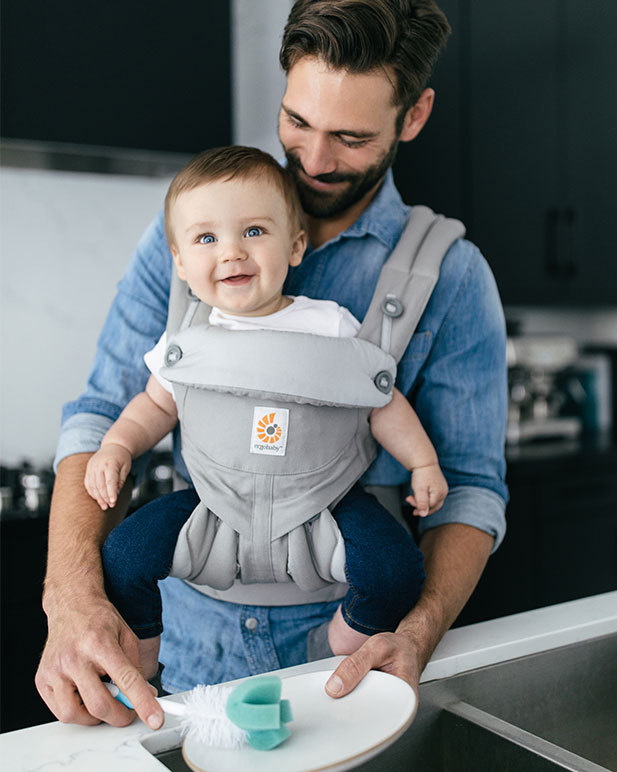
Outward-facing babywearing used to be a controversial choice. We’re going to shed some light on the topic and dispel some old myths. Concerns over comfort and safety date back to a time when there were no ergonomic baby carriers available, and the baby carriers used to allow baby‘s legs to dangle when carried.
With the invention of our Omni carriers, the ergonomic forward facing carry really shows what it can do. It makes parents’ and carers’ everyday lives so much easier, promotes joint activity with your child in all environments and is very practical.
All of our baby carriers have been tested and certified by both the AGR (Aktion gesunder Rücken e.V.) campaign for healthier backs and the International Hip Dysplasia Institute offering you total peace of mind when it comes to ergonomic positioning in all carry positions.
Outward facing is no exception and as with any carrying position, there are a few things to consider so here is an overview of the most important facts about carrying a baby in the outward or forward facing position.
Outward facing babywearing – the Checklist – When and how can I carry my child in the forward facing position in a baby carrier?
The size must fit: your baby should be at least 5 to 6 months old, weigh at least 6.4 kilograms and fit into a carrier with their chin clearing the top edge of the panel when their bottom is deep in the seat of the carrier.

Baby is awake: this means that your baby should be settled, awake and alert. If they start to get sleepy, switch them back round to inwards facing to protect their airways.
Baby can control their head: all babies are different but generally by the age of around 5-6 months, your baby will likely have good head control, can actively look, and turn its head back and forth with interest. They need to be able to do this to outwards face safely.

Baby is curious: your baby should be showing an interest in its environment and want to discover the world together with you. This must be combined with all the other steps for baby to be ready to forward face.
Ideally be in a quiet, low-stimulus environment. Little ones can easily get overstimulated, we recommend using this position in less-crowded areas like in the garden on a rural walk or exploring familiar areas together.
Check baby’s position: every time you put baby in their carrier we recommend doing a “pelvic tuck” where you scoop baby’s bottom deep into the carrier with their knees higher than the seat in a spread squat position. Their legs should never dangle down.

Your baby carrier is designed for outwards facing and is set up correctly: in our Omni carrier the sliders on the panel should be pushed down/inwards. If you are using our Embrace carrier you should bunch the material between their thighs and for our Aerloom carrier you should pull the tabs on the front of the panel tight to narrow the carrier panel. If you have an Aura wrap or Adapt carrier then your carrier isn’t designed to allow outwards facing.
Start with short increments of time 10-20 minutes outwards facing and slowly build up the time.
Watch for signs of fatigue and overstimulation in your child (crying, rubbing eyes, restlessness, head turning away, etc.) and then change to inward facing positions or take your baby out of the carrier.
If your carrier, baby, and situation all meet the requirements above then give it a try and let us know what you think!
Find out how to adjust your Omni baby carrier correctly and how to put your baby in it correctly here.



